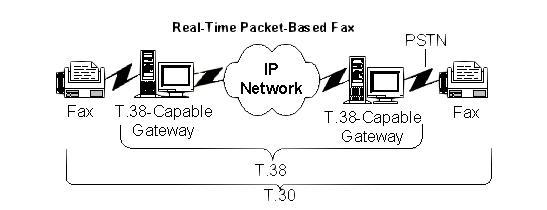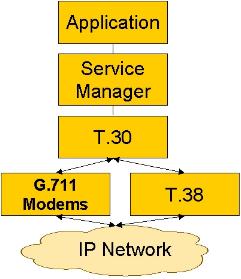The fax server has been with us for over 15 years, but will it be around for another 15? Some would say that fax is dead. But don’t count on that. It’s difficult to overestimate the endurance of entrenched technologies, especially when they are affordable, useful, easy-to-use and serve a critical purpose. As long as there are paper documents with no electronic source available, there will be a need for fax or its equivalent. But what about the fax server and its hardware foundation, the multi-line fax board?
It also should prove to be enduring, but not, necessarily, in its present form. Because of its high cost, the enterprise fax server doesn’t serve many smaller organizations, except for those where the function is business critical. And if the price is lowered to the point where it is affordable for the small-to-medium enterprise (SME), the margins in each sale don’t support the traditional VAR-dealer distribution channel. Moreover, as a stand- alone system, a fax server typically requires on-site installation and training, moving it even further away from the SME. If the benefits of the enterprise fax server are to be affordable and widely available, fax, as a message medium, must become an integrated component of corporate communications systems. But how?
Over the next 10 years, the fax-server function will become widely available, but not as a stand-alone system; it will be a service. IP, SIP, and integrated-application hosted communications services will make it happen.
For service delivery of applications such as PBX and messaging, IP networks make the location of the equipment irrelevant. IP allows the choice of location to be weighted more towards other considerations, such as operations, service, and support costs. So, just as the advent of VoIP has given new life to the hosted PBX, Internet fax has the potential of eliminating the need for CPE fax servers, subsuming and then expanding a $100-million-plus market in the process. What’s more, a strong case can be made that the ultimate market winner in hosted communications will be the provider of a seamlessly integrated offering. To emphasize the market power of bundled applications, Larry Ellison, CEO of Oracle, says, “Best-of-breed is dead, except for dog shows.” If this applies to the fax server then even as a hosted application, the stand-alone server will disappear, just as stand-alone word-processor and spreadsheet applications have disappeared.
There are services being offered today from many companies that use the Internet to move the server from the enterprise to the facilities of the service provider. But there is one big difference between the function of these services being offered today and the current PSTN-based systems: they are all based on store-and-forward rather than real- time fax. The service provider’s system is connected to the PSTN for non-subscriber fax transactions. Other fax documents are exchanged with the subscriber using e-mail or some equivalent, so the real-time nature of PSTN fax is lost. This means faxes are sent from the client’s PC or fax terminal to the service provider’s server. From there, they are forwarded to the destination terminal.
And what about those servers? Well, they are expensive. Multi-line fax boards haven’t kept pace with the rest of techdom, or even telecom, in improvements in price/performance. So not only are CPE servers expensive, so are those being deployed by the service providers. At several-hundred dollars per port they don’t compare very favorably with the under $100 per-port price tag of other media technologies.



 Gateways send faxes on their way; servers terminate faxes. Hosted IP-based fax-server applications can’t duplicate and then extend the function of PSTN faxes unless and until they can terminate T.38 (real-time) faxes. Call it “terminating T.38”. It’s pictured below. TerminatingT38? is analogous to the “intelligent fax boards” used in traditional fax servers. Both have T.30; without it, they couldn’t communicate with another fax terminal. But instead of the analog fax modems of the fax board, terminating T.38 has the T.38 protocol engine. No DSPs are required since T.38 is not a signal-processing task. With T.38, PCM stops at the gateway. The demodulated bits are what’s sent across the IP network, not the PCM data, which requires 10 times the bandwidth.
Gateways send faxes on their way; servers terminate faxes. Hosted IP-based fax-server applications can’t duplicate and then extend the function of PSTN faxes unless and until they can terminate T.38 (real-time) faxes. Call it “terminating T.38”. It’s pictured below. TerminatingT38? is analogous to the “intelligent fax boards” used in traditional fax servers. Both have T.30; without it, they couldn’t communicate with another fax terminal. But instead of the analog fax modems of the fax board, terminating T.38 has the T.38 protocol engine. No DSPs are required since T.38 is not a signal-processing task. With T.38, PCM stops at the gateway. The demodulated bits are what’s sent across the IP network, not the PCM data, which requires 10 times the bandwidth.





